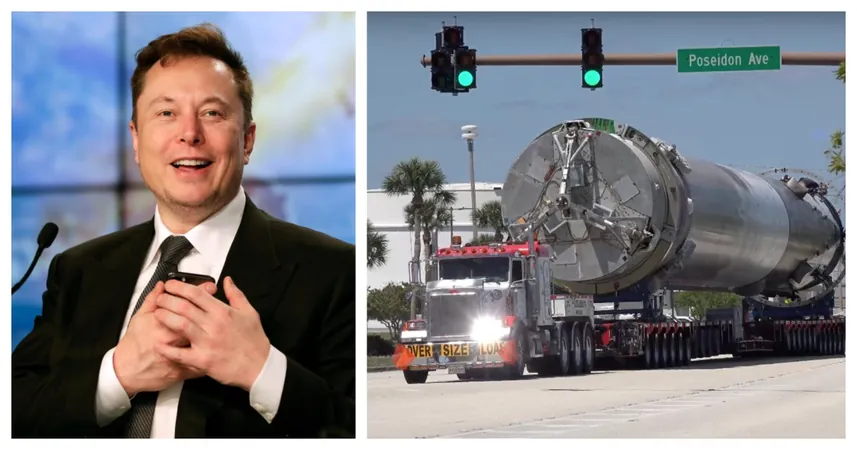
How SpaceX Revolutionized Rocket Transport: A $10 Million Savings in Just 10 Days!
2025-01-06
Author: Arjun
Introduction
In an unprecedented feat for the aerospace industry, SpaceX has achieved remarkable success by consistently thinking outside the box. Known for its groundbreaking technology, including landing rockets upright post-mission and ambitious plans for Mars colonization, SpaceX's innovative approaches extend even to the logistics of transporting its rockets.
Innovative Land Transport
Recent insights from Eric Berger's book *Reentry* reveal how SpaceX saved significant time and money by opting for land transport instead of the conventional sea route. While most aerospace companies rely on ships for transporting their rockets—an expensive and lengthy process—SpaceX decided to tackle the challenge of moving its massive spacecraft overland across the United States.
Challenges of Overland Transport
Moving a rocket akin to the height of a building presents its own set of challenges. SpaceX quickly hit a roadblock when they discovered that their colossal rocket wouldn't fit under standard freeway overpasses. Faced with the prospect of delaying their timeline by months and spending millions more, the SpaceX team refused to throw in the towel. Instead, they got creative.
Creative Problem-Solving
Their engineers meticulously mapped an "absurd and tortuous" backroad route from Texas to Florida that avoided overpasses entirely, but this new path wasn't obstacle-free. Recognizing the potential hazards from power lines and other overhead structures, the engineers equipped their vehicles with a 17-foot pole mounted on the bumper to identify any looming threats. Every time the pole hit a line, they would jump out, raise it using sticks, and navigate the rocket past the obstruction—only to quickly get back in front to continue the journey.
The Journey
This grueling "road trip from hell" saw the team averaging just 10 miles per hour, yet they pushed through, taking shifts driving day and night. Just in time for the Thanksgiving deadline, they reached their destination on November 24th at 3:21 PM, with less than two hours to spare before Florida's temporary closure for oversized loads.
Conclusion
The resourcefulness demonstrated here is key. While a typical aerospace firm might have spent upwards of $10 million and taken several months to navigate shipping by sea, SpaceX slashed costs and time by leveraging innovative land transport. The combination of creative problem-solving and sheer tenacity not only allowed SpaceX to meet its deadlines but also reinforced its reputation as a pioneer in the aerospace sector.
As SpaceX continues to push the boundaries of technology and transportation, their scrappy culture and commitment to innovation position them as leaders in the exploration of Mars and beyond. The world watches, eager to see what other challenges they can conquer with their fearless approach to aerospace engineering. Will their unconventional methods set a new standard for the industry? Time will tell!
 Brasil (PT)
Brasil (PT)
 Canada (EN)
Canada (EN)
 Chile (ES)
Chile (ES)
 Česko (CS)
Česko (CS)
 대한민국 (KO)
대한민국 (KO)
 España (ES)
España (ES)
 France (FR)
France (FR)
 Hong Kong (EN)
Hong Kong (EN)
 Italia (IT)
Italia (IT)
 日本 (JA)
日本 (JA)
 Magyarország (HU)
Magyarország (HU)
 Norge (NO)
Norge (NO)
 Polska (PL)
Polska (PL)
 Schweiz (DE)
Schweiz (DE)
 Singapore (EN)
Singapore (EN)
 Sverige (SV)
Sverige (SV)
 Suomi (FI)
Suomi (FI)
 Türkiye (TR)
Türkiye (TR)
 الإمارات العربية المتحدة (AR)
الإمارات العربية المتحدة (AR)